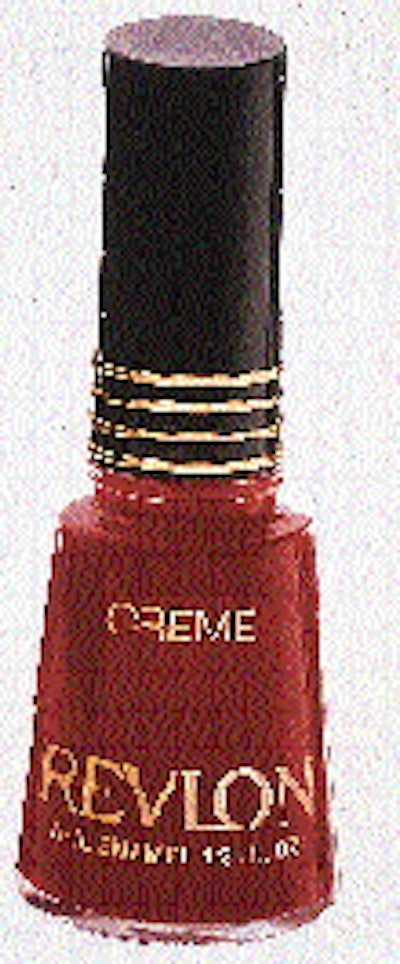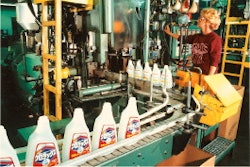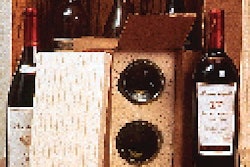As anyone who visits Pack Expo or interpack or any of the other packaging exhibitions can attest, there's no shortage of suppliers to the packaging field. Still, there comes a time when a packaged goods company needs a specific machine or material that's not commercially available. Given appropriate resources, the solution is often developed in-house. Typically these developments are closely guarded so that the company can maintain a competitive edge. But lately a new strategy has emerged wherein home-grown technology is viewed as a profit center rather than a trade secret. Instead of guarding technology developed in-house, the innovation is offered for sale, often through licensing arrangements. It isn't any one industry that has a lock on this strategy either. Merck, Revlon, and Clorox, for example, represent industries as diverse as pharmaceuticals, cosmetics, and household detergents/cleansers. Yet all three are pursuing licensing arrangements of one kind or another. "What you're seeing is a trend toward attempting to develop revenue from latent technology, or from resources that have minimal value internally yet can be exploited externally," says Jim Self, manager of business affairs in the Merck Mfg. Div. at drug giant Merck & Co., based in Whitehouse Station, NJ. "It's not enough anymore to just look at growth in sales of product x as being the answer. You see the same thinking behind the way companies are trying to exploit contract manufacturing capabilities. They identify a resource being used at only 40% of its capacity and figure why not utilize that resource with external companies." Merck's licensing campaign was formally launched in February of '96. Getting it launched was partly a matter of taking a fresh look at the manufacturing function in the company. Yes, manufacturing is a cost center. But as Self puts it, "There are a lot of activities and technological resources in the manufacturing division that can be used to generate revenues. This is what we're doing with our package designs." It isn't done, however, without outside help. While conceptualizing is done almost exclusively by Merck engineers, those engineers usually turn to other firms for production of prototypes. While the most obvious objective of licensing arrangements is to generate new revenue, sometimes they bring other benefits. Merck's own packaging costs could be cut, for example, by increasing demand for a package that is being produced for Merck in very low volumes. By licensing the package design for use by others, all users benefit from economies of scale. Medistick unit dose container A good example of the kind of package Merck now licenses is the Medistick unit dose tablet/capsule container (1). It was developed initially for Merck's Proscar, a prescription medication used to treat enlarged prostate glands. The Medistick can be made of just about any injection-moldable resin. It has individual product cavities and a heat-sealed peelable foil lid. Printed on the lidding is the day of the week, which helps consumers keep track if they've taken their daily dose. The package is compact, it's easy to use, and a child-resistant feature can be added by snapping on a separate patented hinged cover. Another item licensed by Merck is the Prin two-compartment medication container for injectables (2). It's designed to isolate and later mix a pharmaceutical powder and a diluent to reconstitute the powder all within a single ready-to-use container. The powder component is aseptically filled in the bottom vial while the sterilized diluent is filled into the upper container. The reconstitution is activated by tearing away a band that separates top and bottom containers and pressing down on the upper container. This allows the contents of the two vessels to mix. In addition to being convenient and easy to use, the Prin container, compared to two separate vials, is said to reduce packaging component costs, virtually eliminate the possibility of using incorrect diluent, and assure sterility because there is no vial transfer. Medistick is a package that Merck actually uses for its products. But some packages available in its licensing program, like the Prin, are not used internally. Sometimes engineers in the packaging group may come up with a concept, win approval to pursue it, and bring it to the stage where it's deemed worth patenting. But the marketing group may decide not to use it for a Merck product. Or perhaps something in the regulatory picture might cause Merck to decide not to go to market with a product after all, even though the package has been developed. No matter. Into the licensing catalog it goes. One thing Self emphasizes about the licensing program is that Merck is not positioning itself as a package manufacturer. "We don't make packages," says Self, an industrial engineer and Wharton School MBA who's spent seven years at Merck, much of it in packaging. "We're looking for partners who can manufacture, market and distribute packages made from our designs." What it really comes down to is licensing of intellectual property, says Self. A suitable model of this strategy, he adds, are today's biotech companies. "They're not saying we're going to be a soup-to-nuts provider. They're saying we're a research company and we'll license our intellectual property to someone who has the capability to crank it out. That way they avoid a lot of the overhead and risk." Merck, whose licensees are typically injection molding companies, naturally has certain packages it has developed that are not candidates for the licensing campaign. "If the package design is what creates your competitive edge, if it's so unique that it's going to increase sales, then you don't want to share it," says Self. Decorating breakthrough A similarly defensive strategy is employed at another firm active in corporate licensing, the RevTech unit of New York-based cosmetics giant Revlon Consumer Products Corp. RevTech's Envirogluv(TM) technology, essentially a method of screen printing directly on glass and curing quickly with UV light, was developed for use on containers of Revlon's own products. Its chief value is that it offers the direct print quality of Applied Ceramic Labeling (ACL) but requires less energy and less factory space because the special inks don't require drying in a huge and hot lehr oven as ACL inks do. Additionally, unlike ACL inks, RevTech inks are free of heavy metals. These "green" qualities prompted the Coalition of Northeastern Governors (CONEG) to present Revlon with the 1995 Innovation Award for environmentally sound packaging technology. For the past two years, Envirogluv has been used on Revlon® nail enamel (3) and Revlon Age Defying and ColorStay Makeup bottles. But Revlon is now in discussions with numerous global beverage, food, automotive, glass and cosmetics manufacturers that have expressed interest in licensing the Envirogluv technology. Like Merck, Revlon will naturally be selective when it comes to licensees. "Mass cosmetics manufacturers will not be offered licenses," says RevTech president Andrew J. Schlossman. "That is to say, people who would be Revlon's competitors, who are in Revlon's channel of distribution." One difference between the Merck and Revlon licensing programs is that Revlon will maintain a manufacturing role as maker of the patented inks that are the essence of the technology. But that's about all Revlon will do. Marketing, for instance, will be handled exclusively by Graphics Intl. Group (Markham, Ontario, Canada). GIG is a major supplier of automatic screen-printing equipment for three-dimensional containers in North America. Also part of the Envirogluv marketing alliance is Fusion UV Systems (Flemington, NJ), which will be providing the proprietary lamp systems for use with Envirogluv. How big a leap was it for a well- known cosmetics firm to become a manufacturer of inks? Not big at all, says Schlossman. "Remember, we're a chemistry company," says Schlossman. "Having developed a new technology for use internally, it was obvious that if there is a value to us, there's got to be a value to other companies." But the initial driver was strictly internal. Constant value analysis "The lion's share of cosmetics is packaging, and doing value analysis of your packaging to be sure you are correctly communicating with your customer," says Schlossman. That's where the research and development department, and particularly senior vice president of advanced technology Mel Kamen, comes in. "The biggest thing R&D does is figure ways to take the cost out and at the same time enhance the value of our products," says Schlossman. "That's what Mel does on a day-to-day basis, and on this project, he became aware early on that it would have advantages outside of Revlon." Once those advantages were apparent, Revlon set up the RevTech division to capitalize on them. It also established the marketing alliance with GIG and Fusion UV. This was absolutely essential, says Schlossman. "We are not engineers nor do we want to be," he says. "We make ink, and we understand it very well. We'll train people how to use it, too. But we do not want to be in the business of servicing equipment. GIG, on the other hand, is a distributor and servicer of equipment on a worldwide basis. So it makes sense for them to be the marketers of Envirogluv because customers need to either retrofit or purchase the machinery in order to use the technology. GIG is perfectly positioned to do this. They're already in touch with the targeted customer base. It would be all new to us if we tried to reach them." Schlossman figures that in time he can target non-packaging industries such as the automotive or tile or computer chip industries. But Envirogluv's initial thrust will be aimed squarely at packaging, or the "low-hanging fruit," as Schlossman puts it. Early applications will likely be substitutions for bottles decorated via ACL. "The savings can be greater than 50%," says Schlossman, who bases his estimates on Revlon's own experience when it switched to Envirogluv for its own products. But some containers currently decorated with pressure-sensitive labels may also be targeted. Overseas markets are in RevTech's sights as well, where the interest, says Schlossman, is "significant." How about machines? While the licensing programs at Merck and Revlon are based on packaging or decorating materials, other firms focus on machinery developments. And they may view their licensing program more as a way of offsetting development costs than as a way of generating new sources of revenue. Clorox is a good example. The Oakland-based firm needs high speeds from its cappers, speeds typically achieved with a multi-station rotary chuck capper. However, Clorox also needs quick changeover, and a rotary chuck capper ordinarily doesn't lend itself to rapid changeover because each chuck must be removed and replaced. In-line disc-style cappers, on the other hand, while easier to change over, weren't fast enough for the company. So the engineers at Clorox's tech center in Pleasanton, CA, set out to make one (4). First Clorox engineers analyzed the relationship between three critical speeds: that of the conveyor carrying the bottle, the side-belts that help drive the bottle, and the paired rotating discs that seat the cap and torque it down. Then for each they calculated the optimal speed that would cause caps to seat smoothly on the bottle neck without getting cocked. They also separated the task of seating the cap and torquing it. Seating is done by the first two pairs of discs, torquing by the last two pairs. Eventually they produced an in-line disc-style capper capable of handling quart- or liter-sized bottles at 600/min, gallons at 300. They built and installed six of these machines over the past two years. Plastic bottles of household cleansers, and of course bleach, are all capped by this home-grown machinery or soon will be. But Clorox never wanted to be in the business of making aftermarket parts or servicing the machines. So it approached The New Resina Corp. (Brooklyn, NY) and the two firms worked out a licensing agreement. It authorizes Resina to make and sell the machine, Model NRX-4000, in return for a royalty on each one sold. Clorox management viewed it as a sound strategy for recouping what it cost to develop the machine-which has 18 claims already approved by the U.S. Patent Office and two more applications pending-in the first place. Will more packaged goods companies join Clorox, Revlon and Merck in the licensing game? Probably. After all, as corporate number crunchers measure not only the cost of new technology but also the amount of time a development cycle takes, licensing revenue may become a convincing justification for undertaking a variety of packaging projects.



























